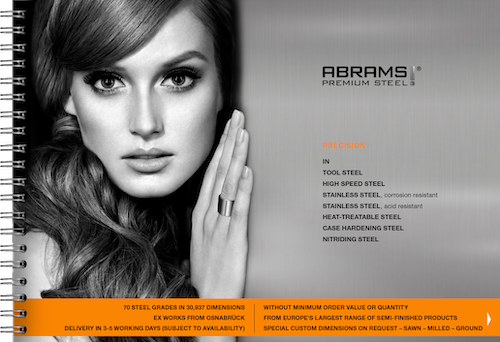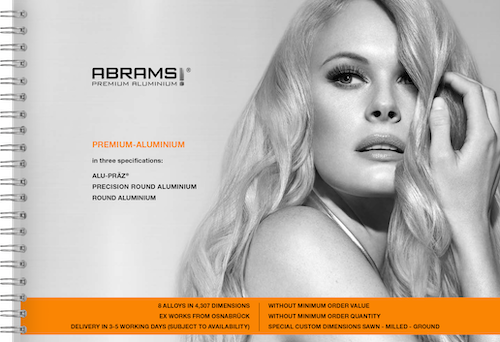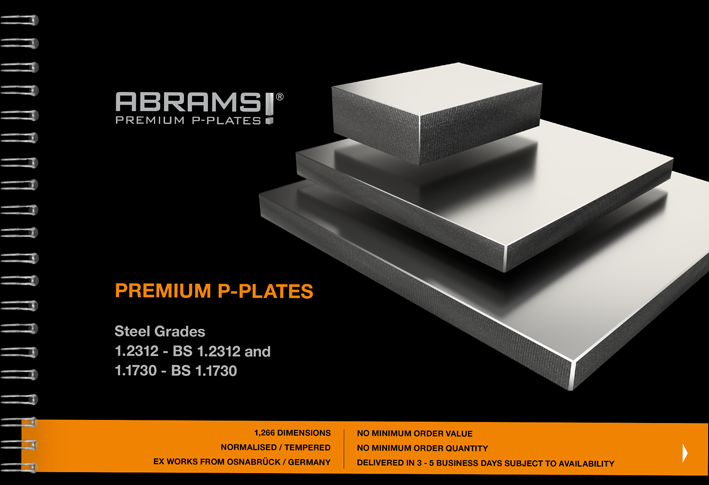What is heat treatable steel? The ABRAMS Steel Guide® explains!

Unalloyed and alloyed heat-treatable steel is structural steel with a carbon content between a mass fraction of 0.25% and 0.60%. It can be quenched and tempered (quenched and tempered = hardened) in a temperature range of 430°C. It is very important to choose the correct hardening temperature and quenching speed for the chosen material grade to reach the required hardness.
When producing, steel carbon has a very high importance. A high carbon content makes the steel harder but at the same time more brittle. A low carbon content results in a softer and more ductile steel.
Heat-treatable steels have a medium carbon content to keep a balance between hardness and ductility. This balance can be enhanced by quenching and tempering the material, as this treatment will give the steel a pre-determined hardness and ductility.
The delivery condition of some heat-treatable steels is annealed (for example: BS 1.1730) while some come pre-hardened/QT (quenched and tempered) (for example: BS 708 M 40+QT).
FAQ - Questions about stainless steel
Why is it called heat-treatable steel?
The name heat-treatable steel originates from the quenching and tempering process of the steel. Quenching and tempering the steel, the so-called conversion hardening, has a direct impact to the balance of hardness and ductility.
The carbon content pre-determines and gives the steel its hardness.
The first step for quenching and tempering steel is the hardening process. By cooling the steel down quickly (quenching), after heating, the carbon will get “trapped” to build a very hard structure, also referred to as martensite. The following tempering process is the re-heating of the material to a lower temperature which reverts the structure back to a more ductile condition (Ferrite and Perlite). After the tempering process heat-treatable steels have specific and pre-determined technical properties. This could be a wanted tensile strength combined with a good ductility for example which the grade would not have in its normal condition.
It is therefore a finely tuned balance that must be achieved in order to obtain the perfect properties for the respective application. And this is precisely what makes the production and use of heat-treatable steels so interesting and challenging at the same time.
Where is heat-treatable steel used?
Heat-treatable steel finds its use in components that need a higher strength. Possible applications for heat-treatable steel are axels, bolts, aircraft landing gear, crankshafts, connecting rods, screws, shafts, and other construction parts that need a higher strength.
You are looking for a specific heat treatable steel and its properties?
We have a solution!
All orange highlighted tiles show heat treatable steel with an array of properties. With just one click you can view your chosen steel grade. But that is not all!
With our patented ABRAMS Steel Guide®, you can find an alternative for your steel grade and its properties in no time. And you can find all the information, send, for your convenience, in an E-mail to you.
No registration needed! Try it now.






















